Have you ever wondered why beardies possess the bearded dragon name? Well, there are so many exciting things about these unique lizards. We’ll learn them all in this “bearded dragon facts” article.
Bearded dragons are becoming popular pets in most parts of the world. The majority of the reptile hobbyists can’t help but heart these gorgeous lizards due to their distinctive personalities.
They are curious animals, docile, friendly, affectionate, etc. They have just many personalities.
Below are the bearded dragon facts that you need to be familiar with if you own a beardie or if planning to have one.
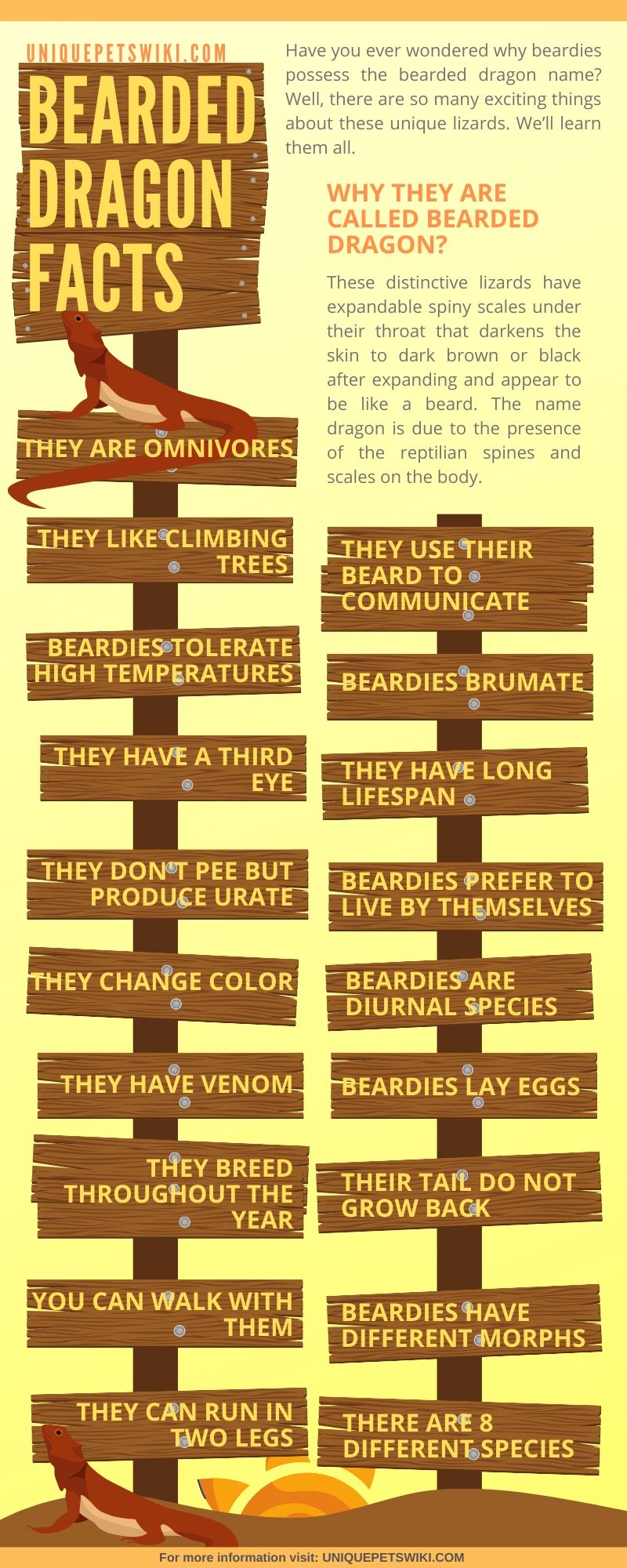
Contents
- Bearded Dragon Facts
- Why Bearded Dragons are Called Bearded Dragons
- Bearded Dragons Use their Beard to Communicate
- Bearded Dragons are Omnivores
- The Beardies Like to Climb Trees
- They Brumate
- The Beardies Tolerate High Temperatures
- Bearded Dragons have Increased Longevity
- They have a Third Eye
- The Beardies Prefer to Live by Themselves
- The Beardies Don’t Pee but Produce Urate
- Bearded Dragons are Diurnal Species
- They Change Color
- Bearded Dragons Lay Eggs
- The Beardies Have Venom
- Their Tail Do Not Grow Back
- They Breed Throughout the Year
- The Beardies Come in Different Morphs
- There are Eight Different Species of Bearded Dragon
- You Can Walk With Your Bearded Dragon
- Bearded Dragons Can Run on Two Legs
- Where Do Bearded Dragons Live?
- Conclusion
Bearded Dragon Facts
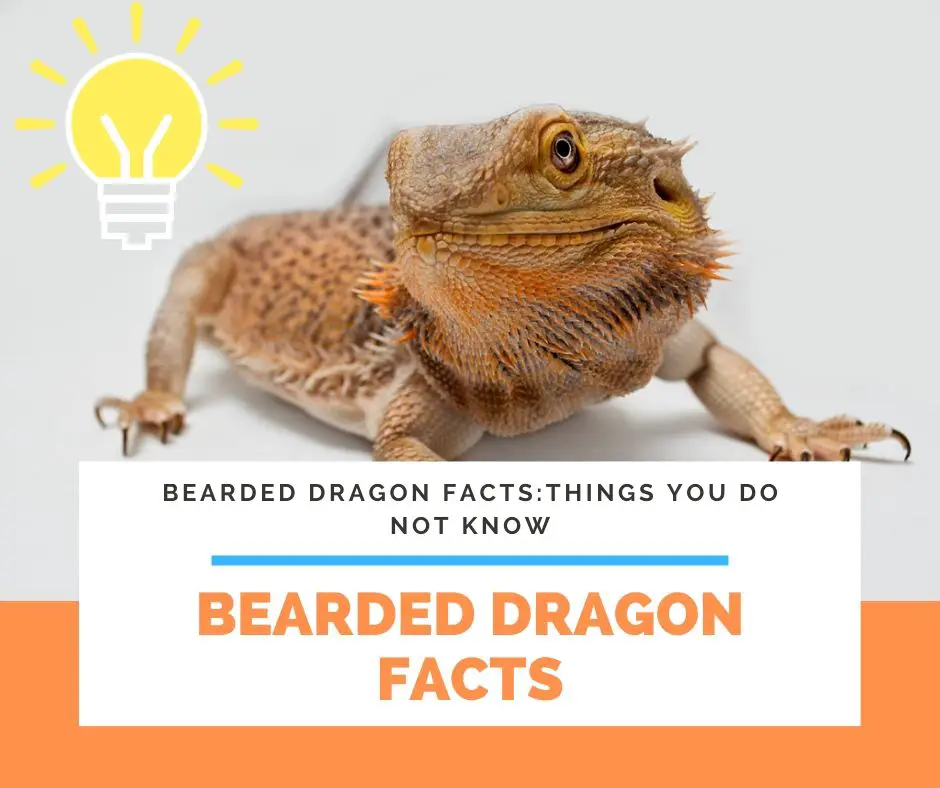
Bearded dragons are fun pets, and you will love everything about them. What you will enjoy most about bearded dragons is how affectionate they seem. If a beardie gets used to you, it will always want to be around you and warm-up itself.
There are a lot of things to know about bearded dragons. Understanding your beardie well prevents you from compromising on its care. Let’s now explore amazing facts about bearded dragons.
Why Bearded Dragons are Called Bearded Dragons
These distinctive lizards have expandable spiny scales under their throat that darkens the skin to dark brown or black after expanding and appear to be like a beard. That is the reason why they are referred to as bearded.
The name dragon is due to the presence of the reptilian spines and scales on the body.
Bearded Dragons Use their Beard to Communicate
A beard is present in both male and female bearded dragons. When a dragon feels threatened or gets excited, you will see it opening its mouth, raising its chin, and expanding its beard out. This behavior makes the beardie appear larger in appearance.
Puffing the beard is one way the beardie uses to frighten the predator. Also, the beardies communicate with each other when breeding by bobbing their head.
A male that wants to mate nods its head quickly, and a female that approves will bob its head slowly.
Bearded Dragons are Omnivores
As omnivores, the beardies eat a wide variety of foods; they eat vegetables, greens, insects, rodents, worms, and fruits.
Bearded dragons have strong jaws that allow them to hold hard-shelled insects tightly and crush them.
New to bearded dragon? Check out the bearded dragon care sheet now! We had listed out all the things you need to know about bearded dragons as pets. Check it now!
The Beardies Like to Climb Trees
Bearded dragons are semi-arboreal lizards. This means that they enjoy spending their time on trees.
It is therefore recommended to provide climbing decors like branches in the enclosure where they can climb.
They Brumate
Like other cold-blooded animals, beardies hibernate during fall to escape the extreme cold. During this time, they usually don’t eat, nor drink, and movement is limited. Brumation can go for several weeks or even months.
Avoid handling your dragon when brumating because you will only be stressing it. You can wake it probably once in a week and give out some food and water if it eats.
It is normal if the beardie ignores the food. In case it eats, keep waking the beardie until it poops.
The Beardies Tolerate High Temperatures
Our special lizards here originate from the deserts of Australia. They perform best under the high temperatures in the wild.
Life in captivity should emulate the beardie’s life in the desert. Therefore, always ensure that the enclosure has correct temperatures.
The standard ambient temperature for these lizards is 90℉; low temperatures are dangerous for beardies, and you might end up losing your friend.
Bearded Dragons have Increased Longevity
The average lifespan of beardies is 8-12 years, but under extreme protection, they can even live for 20 years.
This is a much longer life for a lizard. Having your pet for many years is the joy for every pet lover.
They have a Third Eye
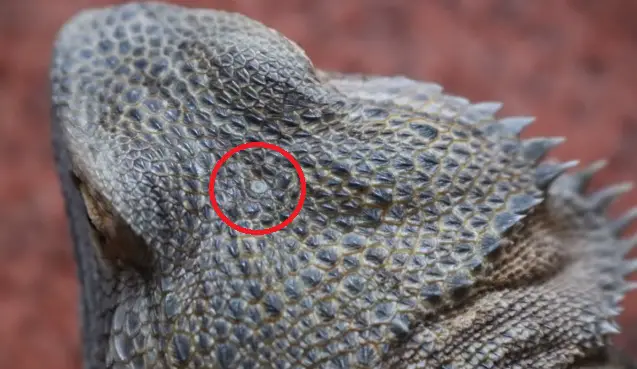
The third beardie eye is a specialized organ located on top of the head and appears to be a grey dot. A third eye helps the beardie to detect changes in light, and this way any shadow appearing from above makes the dragon think it is a predator.
Also, the third eye helps the beardies to orientate themselves and regulate the amount of sunlight they need, among other functions.
The Beardies Prefer to Live by Themselves
As a dragon owner, it is essential to know that beardies don’t get along well with each other. The only time to have more than one bearded dragon in an enclosure is during breeding only.
The beardies, primarily males, will always protect their territories, and they can get into a severe fight with any other dragon getting to the territory. Each beardie, whether male or female, should have its enclosure.
In a cage with multiple dragons, maybe you have come across the beardies piling on each other. It is not a good sign, as many would think, but some beardies are being harassed.
The beardie at the bottom is being dominated, and most of the time, it doesn’t access essential things like food. The health of such a beardie ends up deteriorating, and it can remain like that in its entire life.
The Beardies Don’t Pee but Produce Urate
Bearded dragons don’t urinate like the majority of the mammals; instead, they produce Urate or uric acid. Urate is a waste product from the kidney, and it is always a sign of conserving water.
Typically, a healthy bearded dragon’s Urate should be white, and it is always attached at the end of their poop, which is brown or black. Also, bearded dragons poop infrequently; an adult, for instance, will poop once in a week.
Bearded Dragons are Diurnal Species
They are active throughout the day, and they will need to sleep at night. The beardies don’t require lights when they are sleeping. They prefer to sleep in a totally dark enclosure.
With a beardie, you aren’t required to feed them at night. Just put the lights off to allow your pet to have a peaceful sleep.
They Change Color
Changing color is normal behavior with the beardies, and it is common in young dragons when they are shedding. In some morphs, the baby dragons have a different color from the adults.
The babies lose their standard color, and eventually obtain the color of the adults.
A bearded dragon’s skin does not grow or stretch, and that’s why the beardie has to shed it out of the old skin, and a new one grows to accommodate the body as it changes. During this time, you may observe the beardie changing its color.
The beardies will become darker or even obtain different color patterns. They do it every time they are shedding. Also, a beardie’s body can turn to black while basking to regulate body temperature.
Getting darker is a way of the beardie trying to raise its body temperature quickly.
Bearded Dragons Lay Eggs
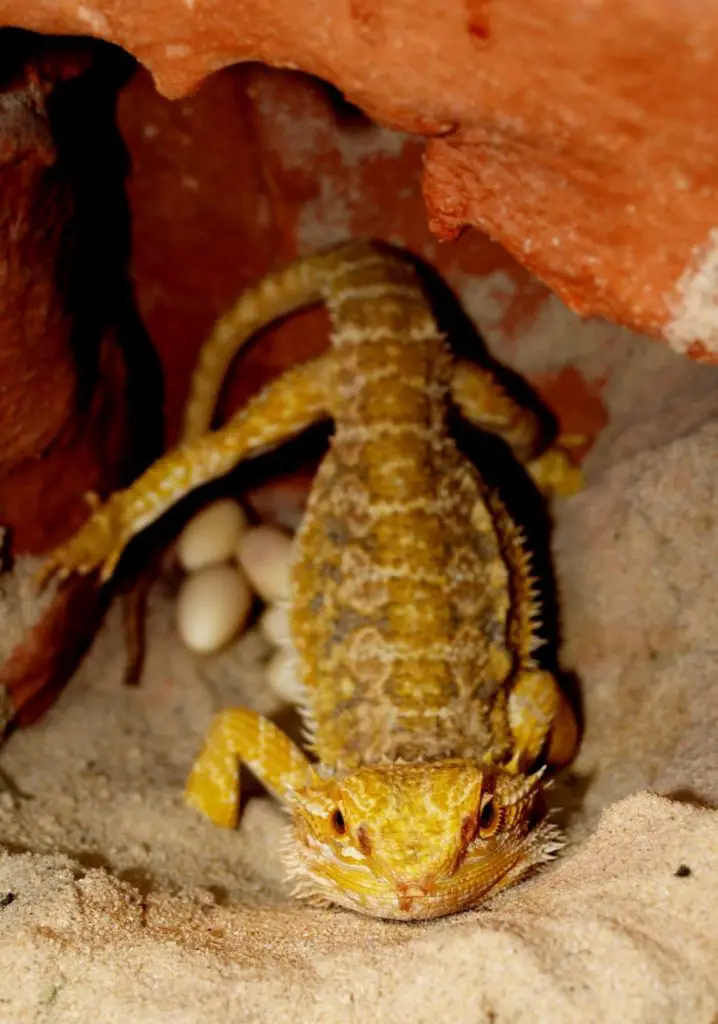
Bearded dragons become sexually mature from 8-18 months. A female bearded dragon is capable of laying eggs with or without mating. When she is ready to lay, you can see eggs looking like marble inside her body, and they can be felt.
Gravid females tend to lay anywhere from 20-30 eggs, which make up a clutch. If there were no mating, the eggs would be infertile. Out of the total laid eggs, you will get an average of 15-18 eggs hatching into babies after the incubation period.
The Beardies Have Venom
Usually, pet owners and most children enjoy handling their beardie, and sometimes it may or may not appreciate it. If a beardie feels you are disturbing it, it can easily bite you if it is not able to jump down.
This might be the first time to hear that bearded dragons produce venom, but it is indeed true. They have primitive venom glands to produce the venom.
However, the beardie’s venom is not poisonous to a person. In case of a bite, wash the wound with clean water to prevent infection.
New to bearded dragon? Check out the bearded dragon care sheet now! We had listed out all the things you need to know about bearded dragons as pets. Check it now!
Their Tail Do Not Grow Back
Generally, it is rare for a beardie to lose its tail. However, the tail can drop due to an accident, tail rot due to disease, and sometimes when escaping a predator. Once a beardie loses its tail, the tail does not grow back and will remain like that in its life.
It is a fun fact to hear that the bearded dragon’s tail is approximately half the length of the beardie’s body. Typically, dragons tend to grow up to about 22 inches or more, and the tail is half the body measurement.
They Breed Throughout the Year
Bearded lizards, particularly those in captivity, do not have a specific period for breeding; they are all seasonal breeders. As long as the beardie is not brumating, it can actively mate.
However, wild bearded dragons vary in their breeding seasons. Breeding time is influenced by the changing seasons; they usually breed in the spring.
The Beardies Come in Different Morphs
Bearded dragons differ significantly from the way they look even after belonging to the same species. There are 11 different types of central bearded dragon morphs.
As a result of breeding, the breeders can mate two specific dragons to produce an offspring that have specific desired traits. Also, beardies occur in different body colors and patterns.
You can find a beardie that is blue, red, white, citrus, orange, or it can possess a different color. They come in a wide range of colors.
There are Eight Different Species of Bearded Dragon
Did you know that there exist eight different bearded dragon species? Well, if not, now you know. Apart from the eight species, there is an additional one species that closely resembles the bearded dragons.
That’s why in some posts, you will find them talking about eight species and others nine. However, the ninth species may not be a true bearded dragon. These dragon species differ from each other in size and environment.
The most common species among the eight is Pogona vitticeps, which is also the central bearded dragon. Pogona vitticeps are the lizards that many people keep today as pets. They thrive best in a dry and hot environment.
Here are the eight species of bearded dragons.
- Pogona vitticeps.
- Pogona barbata.
- Pogona minor mitchelli.
- Pogona nullarbor.
- Pogona minor minima.
- Pogona minor minor.
- Pogona microlepidota.
- Pogona henrylawsoni.
You Can Walk With Your Bearded Dragon
The beardies appreciate being outside the enclosure; if you own a beardie, I’m sure you have noticed how excited it gets when you bring it outside.
The beardies love basking in the sun; they need to get vitamin D3. When it comes to walking, the beardies are relatively easy to handle. You will only need a harness and a leash, then, dress up your pet, and enjoy the walk together.
You can obtain the harness and a leash from the local pet stores. Don’t keep your beardie ever locked in the enclosure, expose it to a life outside their normal home.
Bearded Dragons Can Run on Two Legs
It is a fascinating fact to learn that bearded dragons can run on two legs, but this happens in some situations.
When the beardie is running at high speed, there is an alteration of the center of gravity, which shifts towards the back of the dragon. This makes the body to pull up in an upright position, and the beardie runs on the two hind legs.
Such behavior is evident in wild bearded dragons when they are running away from a predator to make them more maneuverable. Also, if a beardie is scared by another homestead pet, you will see it moving on the hind legs.
The beardie will not run faster in an upright posture, but it can run for a long distance because the body is exposed to air to cool it.
Where Do Bearded Dragons Live?
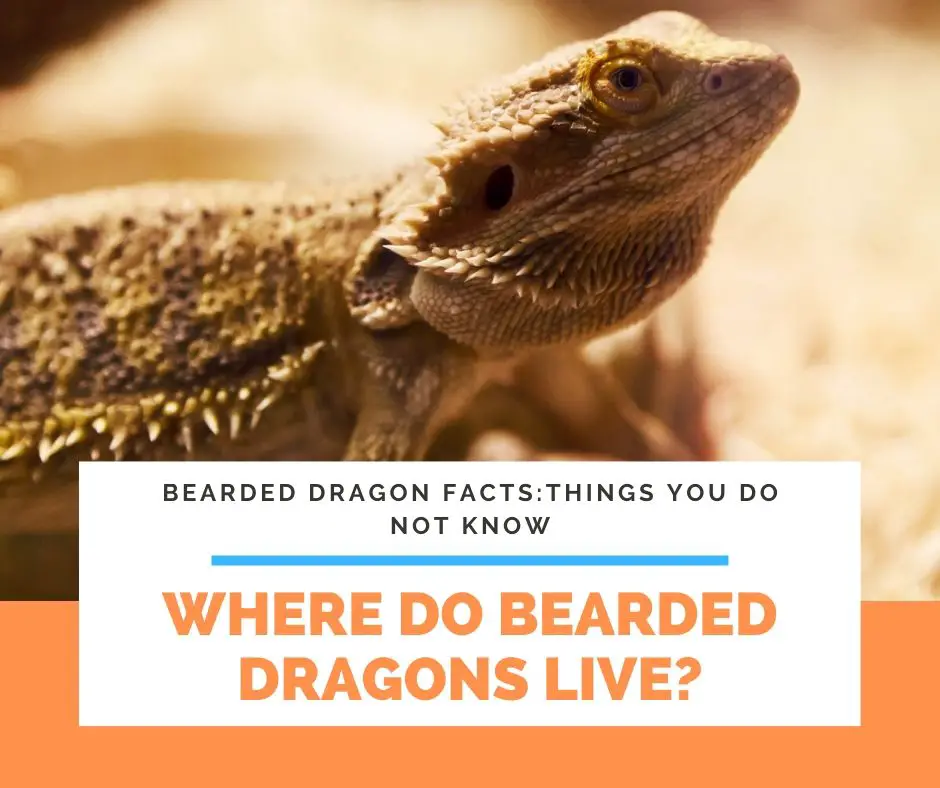
To reiterate, bearded dragons are native to the Australian deserts. In the wild, the beardies inhabit places like deserts, scrublands, subtropical woodlands, and savannas. These are all warm and arid environments.
Bearded lizards are cold-blooded animals; therefore, they depend on an external source of heat to keep their body warm. In the wild, they tend to bask in the sun to raise their body temperatures.
Under extreme heat, the beardie burrows underground to avoid the heat and predators.
Life in captivity should not be much different from the wild. Captivated beardies may not get a chance to bask in the sun, but they have artificial lightings and heating sources in the enclosure.
It is recommended to keep your bearded dragon enclosure warm always to keep the beardie healthy and happy. UVB Light is also necessary to enhance the absorption of calcium.
Conclusion
There you have it, that’s all about bearded dragon facts that you need to know as a beardie enthusiast. Bearded lizards are fascinating creatures with many interesting facts. The list can be big.
I hope this article has helped you to understand many things about your bearded dragon. If you don’t have a dragon, I hope that you have gotten a few reasons to own one. Bearded dragons are adorable pets to have around.
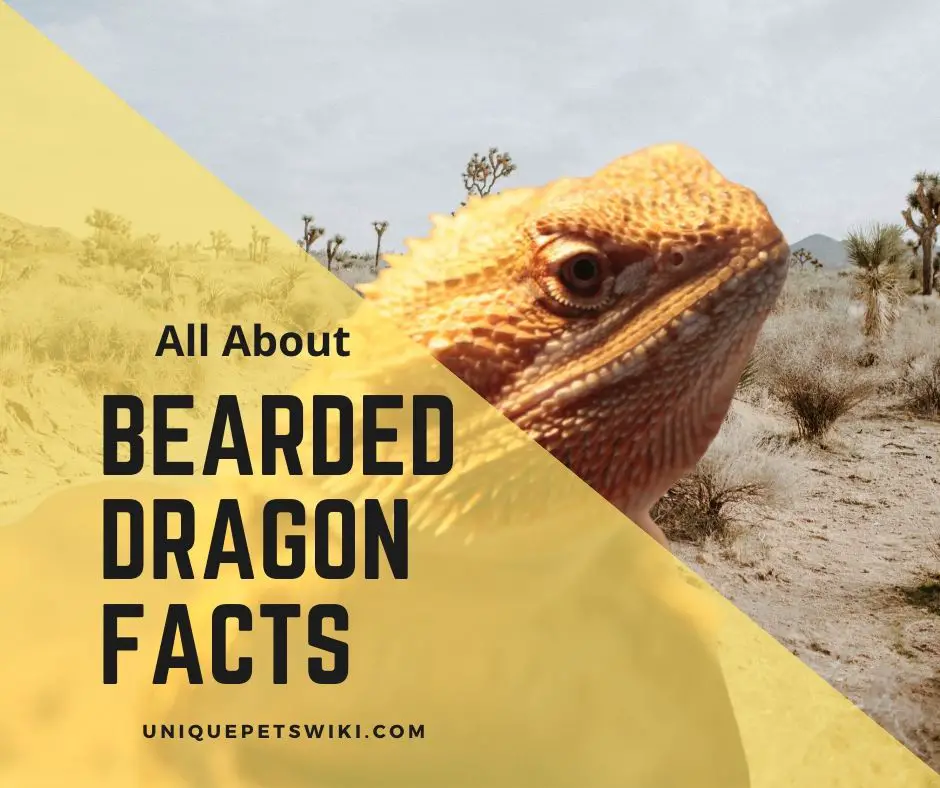
LOl its running